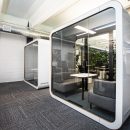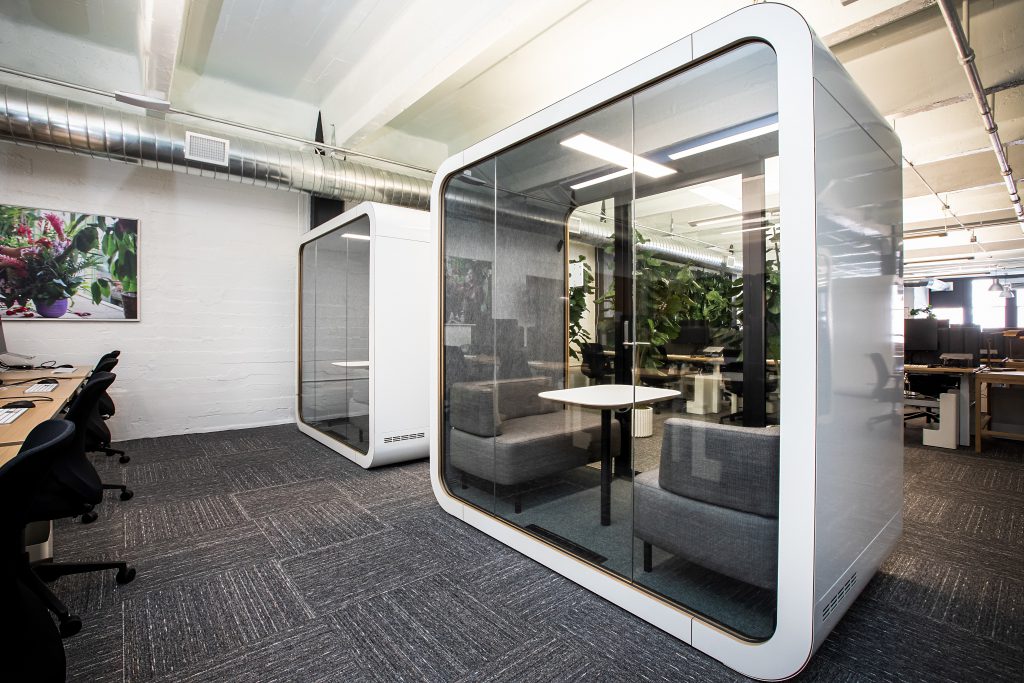
Commercial Property Design Trends 2024

Photo by Uneebo Office Design on Unsplash
This blog post looks at some trends predicted to reshape commercial property in 2024, encompassing well-being-focused designs, sustainability-driven practices, and innovative approaches to meet evolving challenges, charting a course towards more purposeful and resilient workspaces.
Workspaces that focus on Wellbeing
The well-being of employees continues to be at the forefront of office design in particular. Employers are keen to prioritise employees’ well-being and encourage them into the workplace with many looking to “wellness retrofit” existing space. There is a focus on providing:
- natural light, biophilic design, and green spaces.
- access to onsite amenities like fitness facilities, onsite food services and relaxation areas
- events that promote mental and physical wellbeing.
Inclusive Design
Wellness design must accommodate all members of staff and so accessibility and inclusivity will be a major concern in 2024.
This can include:
- Inclusive wayfinding. Incorporating audio, visual, and tactile signage for safe navigation, employing Braille, colour contrasts, glare-free finishes, and tactile letters to enhance accessibility.
- Wheelchair accessibility, providing entrances and exits equipped with automatic doors, ramps, and lifts.
- Restrooms designed with ample space and accessibility features to ensure comfort and ease of use for all.
- Adjustable desks and flexible workstations, accommodating diverse needs and preferences.
- Quiet areas equipped with strategically placed acoustic panels and controlled lighting levels, enhancing comfort and reducing sensory overload.
Circular Design
In an ever-evolving world emphasising sustainability, the rise of circular design is at the forefront. This approach prioritises:
- The dismantling and reusability of materials, championing on-site recycling facilities and embracing principles of the circular economy. Choosing durable materials that can be easily repurposed or recycled at the end of their lifecycle is key.
- The design of spaces that can be easily adapted for various purposes or reconfigured as needs change. This can involve modular construction or adaptable layouts that accommodate different tenants or functions over time.
- Implementing energy-efficient systems and renewable energy sources where feasible.
- Incorporating water-saving fixtures, rainwater harvesting systems, or greywater recycling to reduce water usage within the property.
- Strategies to minimise waste generation during both construction and operation phases. Establishing on-site recycling facilities or partnerships with recycling programs can enhance waste management.
- Selection of furniture, equipment, and fixtures with longevity in mind. Items that are easily repairable, upgradable, or can be refurbished to extend their lifespan.
- Adopting circular economy principles, such as implementing products or services that are leased rather than sold outright. This model encourages reusing, refurbishing, or recycling products after their initial use.
Floating Architecture
Floating structures offer unique opportunities for commercial use, especially in coastal towns or property at waterfront or water-accessible locations. Here are some considerations:
- Waterfront Locations: Floating structures such as restaurants, event spaces, hotels, or offices can attract customers due to their novelty and scenic views. The architecture can be designed to be mobile or adaptable. The floating restaurants or shops could move to different locations based on the season or popularity.
- Utilising flood-resistant materials is crucial. Materials such as marine-grade aluminium, fibreglass, or reinforced concrete that can withstand water exposure and fluctuating water levels are commonly used in floating structures.
- Properly engineered flotation systems and ballasting mechanisms maintain stability during flooding or changes in water levels.
- Structures with adaptable heights or adjustable buoyancy systems allow them to rise with floodwaters, reducing the risk of damage.
The development of well-being, sustainability, and adaptability promise environments that inspire productivity and holistic well-being.
